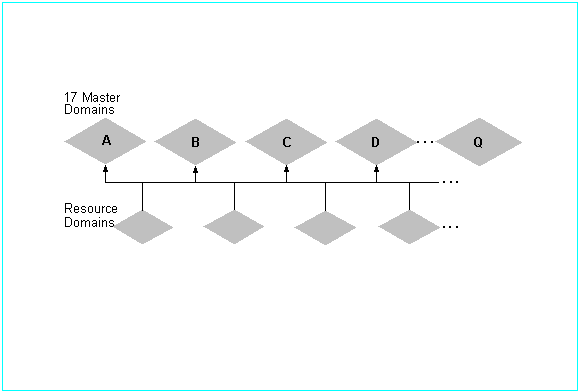
Microsoft currently has approximately 16,000 user accounts and 35,000 network nodes worldwide. The Microsoft staff is evenly divided: approximately one half of the employees are located at or near the Redmond, Washington, campus, and the other half are distributed among approximately 150 sites in 52 countries. All sites require full access to information and electronic mail.
In order to fulfill the goals of worldwide access to corporate information and to demonstrate its commitment to Windows NT Server technology, Microsoft designed its worldwide network around the Window NT domain structure.

A Multiple Master Domain Model
The goals of Microsoft's worldwide domain strategy include:
In order to meet these goals, the Microsoft International Technology Group (ITG) implemented a multiple master domain model, using a relatively small number of master user domains (first tier) administered by Microsoft ITG, using DHCP to compensate for the use of slow WAN links, and using PDCs and BDCs strategically placed to provide optimum availability and performance. The multiple master domain model was selected when Windows NT Advanced Server 3.1 was installed, and the model was not modified when the company upgraded to Windows NT Server 3.5.
Many sites are connected to the network by (slower) 64K links. These are not yet cost-effective to upgrade or, in some cases, an upgrade is not available for that specific location. ITG provides administration of any second-tier domain that is so requested.
Microsoft ITG worked to keep the number of master user domains as small as possible in order to:
Microsoft ITG chose to limit the number of departmental, site, and developer server domains because it is easier to divide large domains in the future than try and combine many small ones into a larger domain. For example, there is one ITG-NETWORKS domain. All servers for the Corporate Networks department are maintained in this one domain.